Coppery Titi
Plecturocebus cupreus
- Habitat: Amazonian tropical rainforest
- Range: Eastern
Brazil and western Peru
- Natural Diet: Fruits, insects
- Status in the Wild: COMMON
All
about Coppery Titis
Coppery Titis have a thick coat of reddish-brown fur covering all
their bodies except their faces. Unlike other neotropical primates,
their tails are not prehensile, and are longer than their bodies.
Their coloring helps in camouflaging them from predators. Equipped
with long tails, strong feet, and sharp claws, the Coppery Titi is
well adapted to life in the trees making them an arboreal species.
The tail serves as a balance when the titi climbs trees and as a
rudder when it jumps from tree to tree. Titis use their tail as a
flag to communicate social signals often entwining it with tails of
family members with whom they are socially bonded. Males and females
are similar in size and are about a foot long with long tails. They
weigh around two pounds. Coppery Titis are diurnal and are active by
day.
Habitat/
Range/Diet
Coppery Titis are endemic to Peru and Brazil in South America and
are found in dense tropical Amazonian rainforests from Peru across
to east Brazil. Like other neotropical primates, Coppery Titis are
largely frugivorous and spend almost 75% of their time sourcing
trees and feeding on fruit. They also feed on insects.
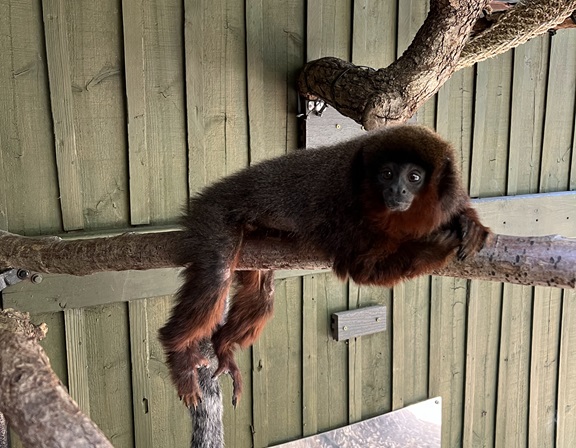
Behavior
Coppery Titis are highly social, living in groups that consist of an
adult pair and their young from several generations. They are highly
communicative and emit an assortment of vocalizations from squeaks,
trills, whistles, screams, and screams. In the wild, the adult pair
are known to duet every morning. Family members are closely bonded
and intertwine tails when they rest together. Coppery titis have a
highly advanced sense of smell that they use to communicate with
family members especially during breeding season. They scent mark
the boundaries of their territories, thus sharing significant
information with their family members and with Titis belonging to
neighboring family groups. Titis display of Aggressive behavior by
shaking their bodies and heads, lashing their tails, and swaying.
Coppery Titis also display anti-predator mobbing behavior where the
whole group encircle the predator and alarm call while moving
around, shaking their bodies and heads, lashing their tails, and
swaying.
Reproduction
Coppery Titis form long term bonds and live together with their
partners for several generations of young. One infant is born every
year between November and March. The young are weaned when they are
about four months old. Males are the primary care givers and
predominantly take care of the infants. They commence their parental
role a few hours after the infant is born, carrying them around and
protecting them. The female’s only parental care role is nursing the
infant.
Conservation/Status
According to the World Conservation Union, Coppery Titis are only
found in a remote region of the Amazonian rainforest that is
isolated because of which, they are not considered to be under any
immediate threat.
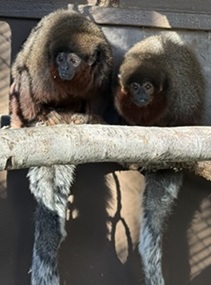
Their dark brown color helps them
camouflage from predators in their natural habitat
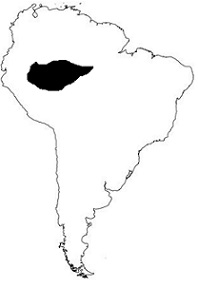
Distributional range - they are
endemic to Peru
and Brazil
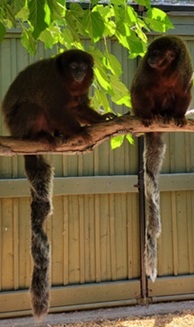
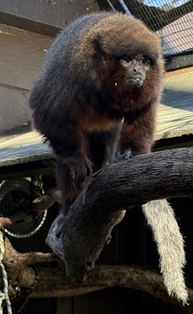
Thick dark brown fur covers their entire bodies except their
faces


